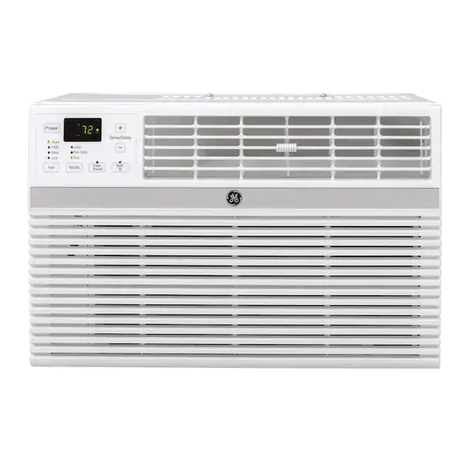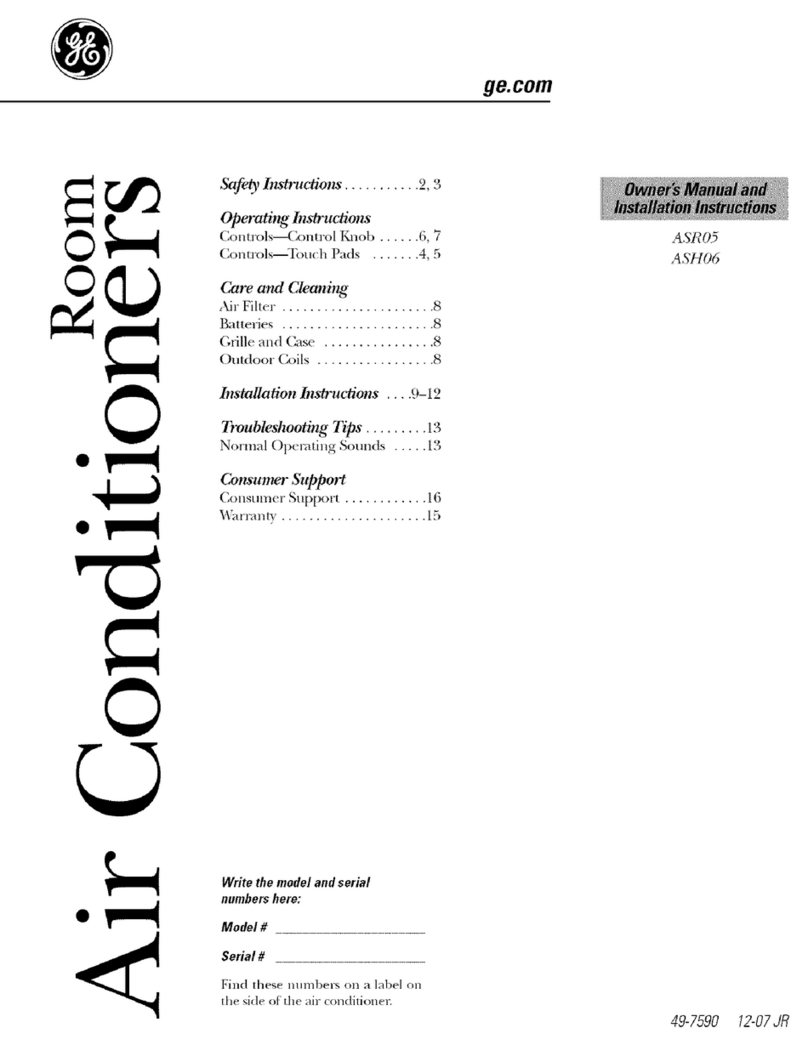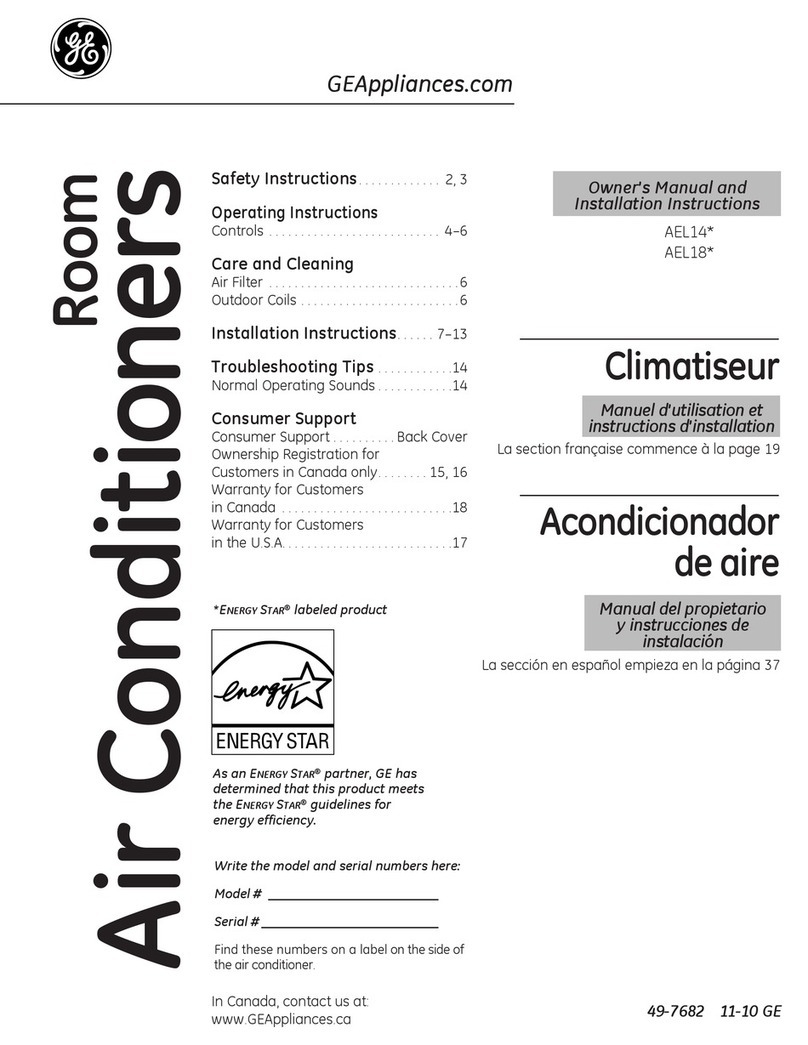GE RAB77B User manual
Other GE Air Conditioner manuals
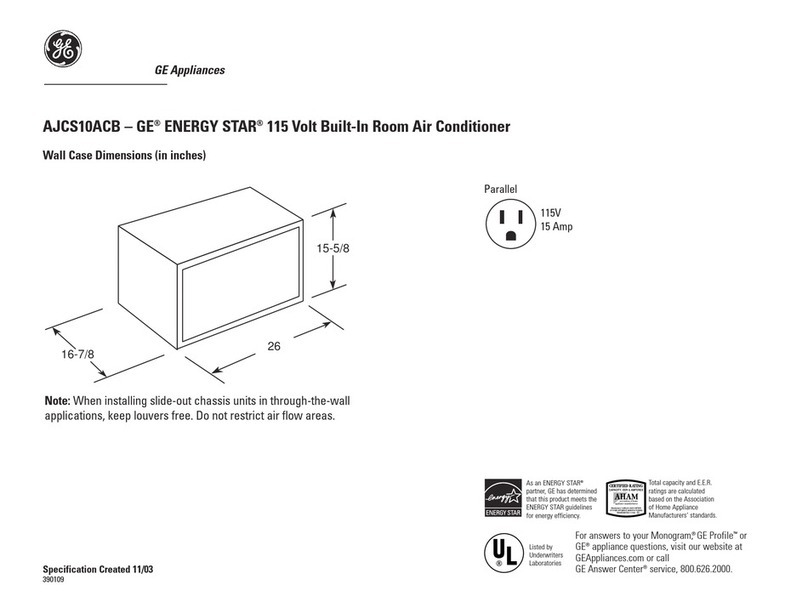
GE
GE AJCS10ACB User manual

GE
GE AHH24DQH1 Operating instructions
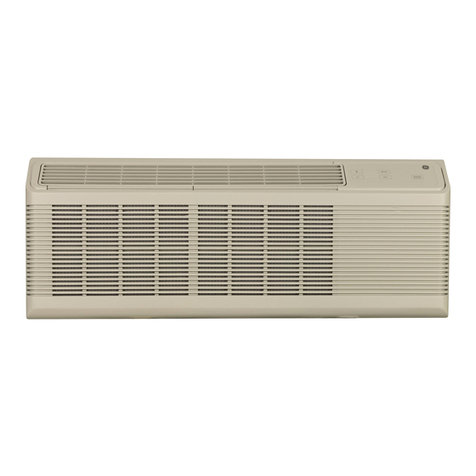
GE
GE Zoneline AZ45 Operating instructions
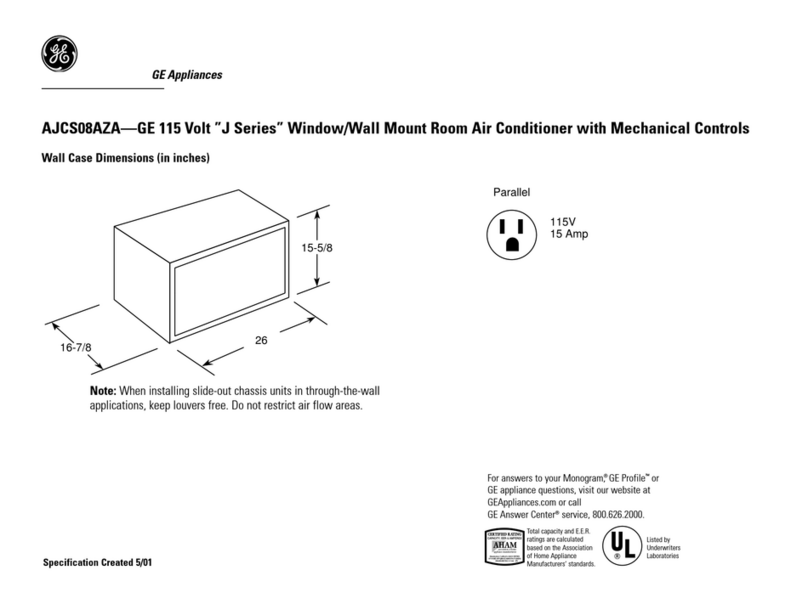
GE
GE AJCS 08 AZ User manual
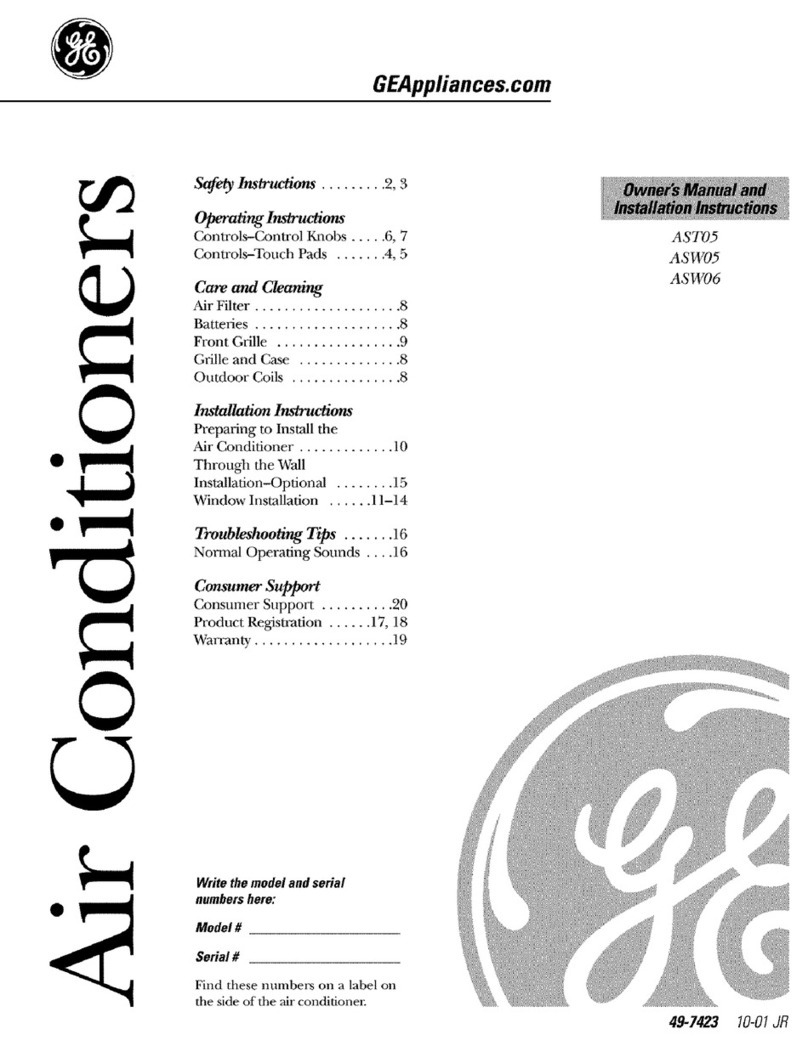
GE
GE ASTD5 and Operating instructions

GE
GE ASW08 Operating instructions
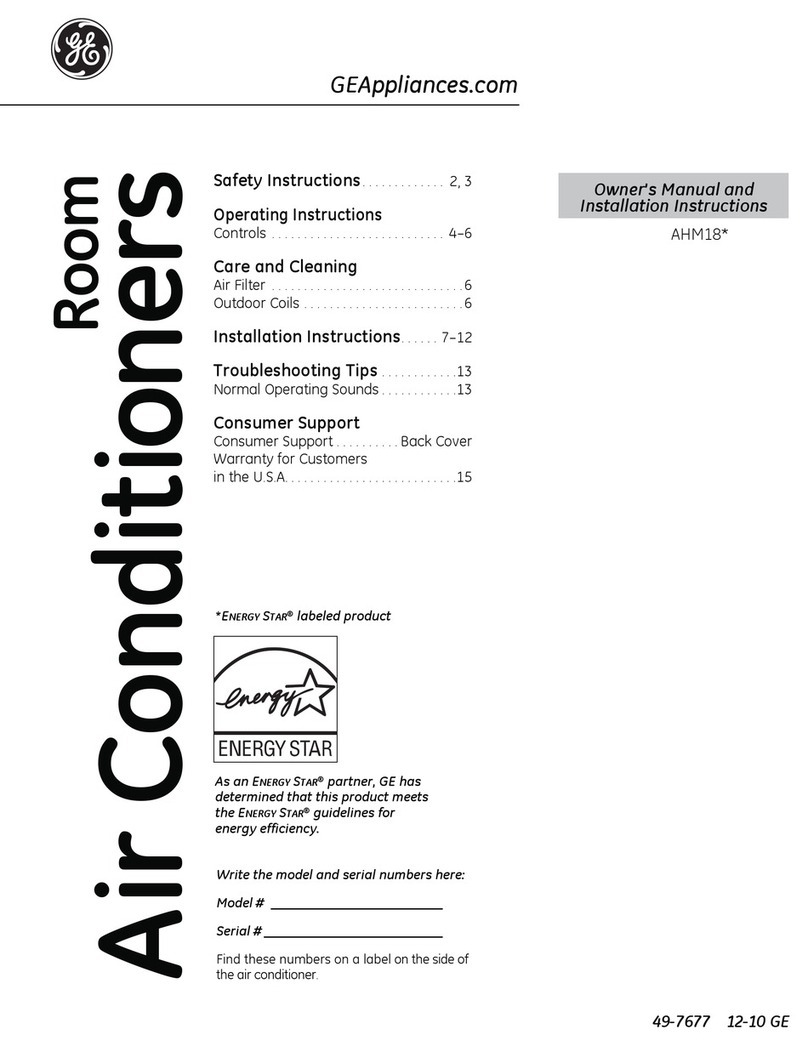
GE
GE AHM18DP Operating instructions
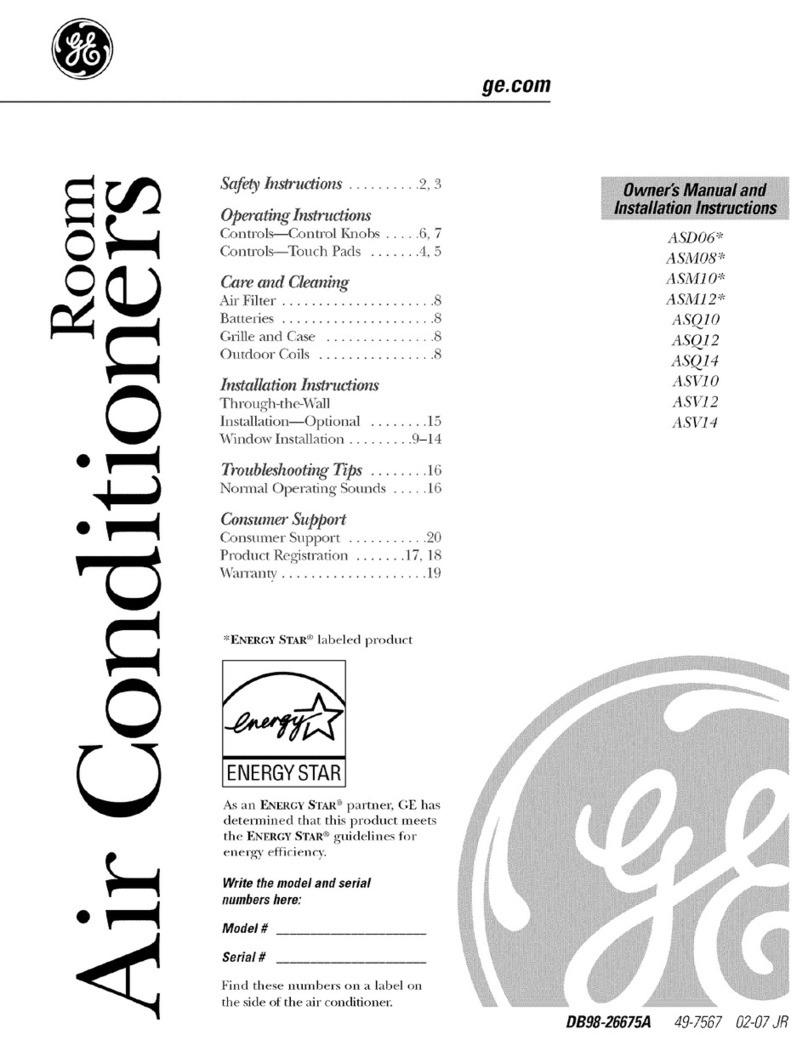
GE
GE ASD06LK Original instructions
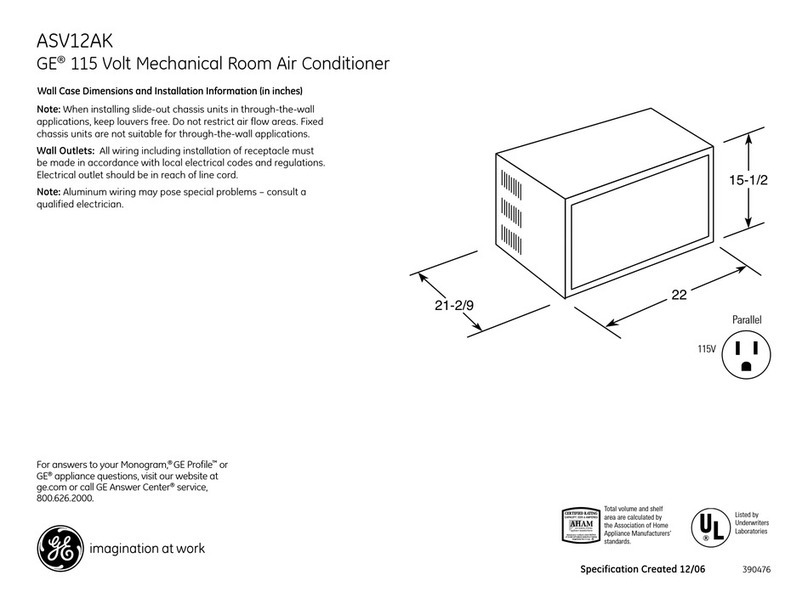
GE
GE ASV12AK Manual
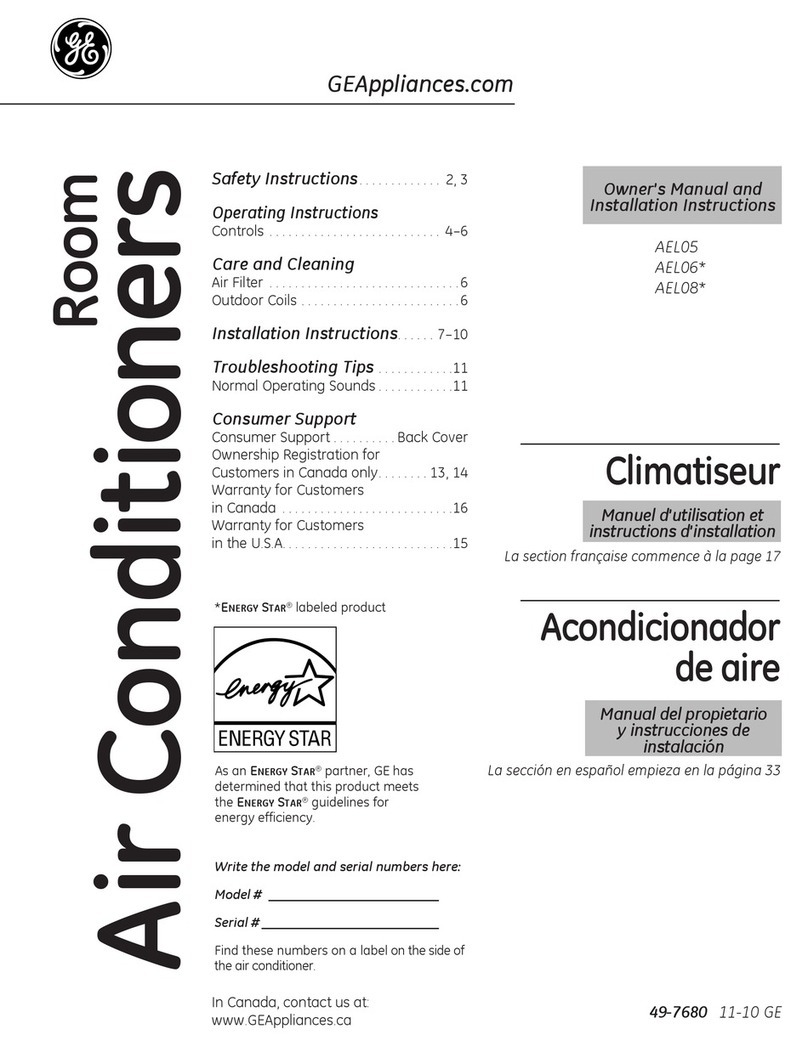
GE
GE AEL06LP Operating instructions
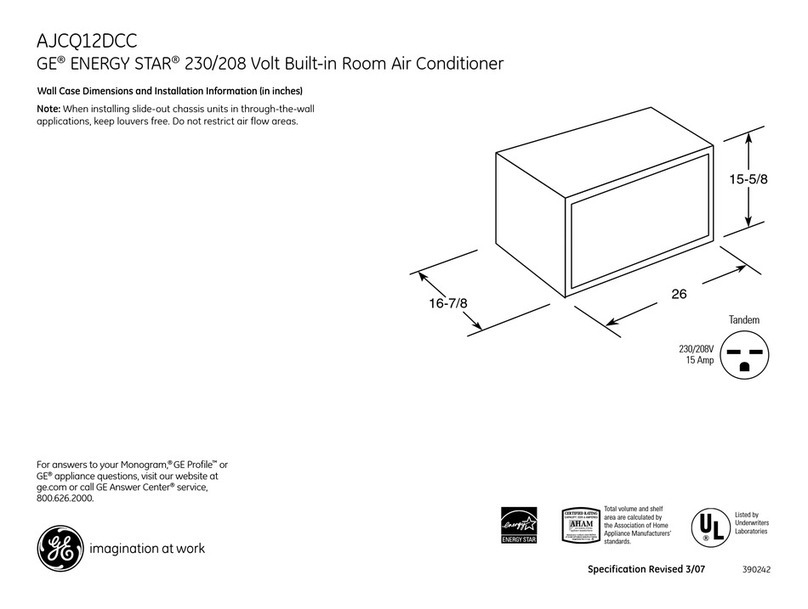
GE
GE AJCQ12DCC User manual
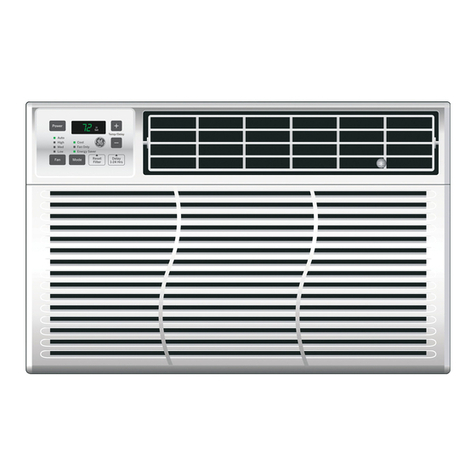
GE
GE AEL08LV Operating instructions
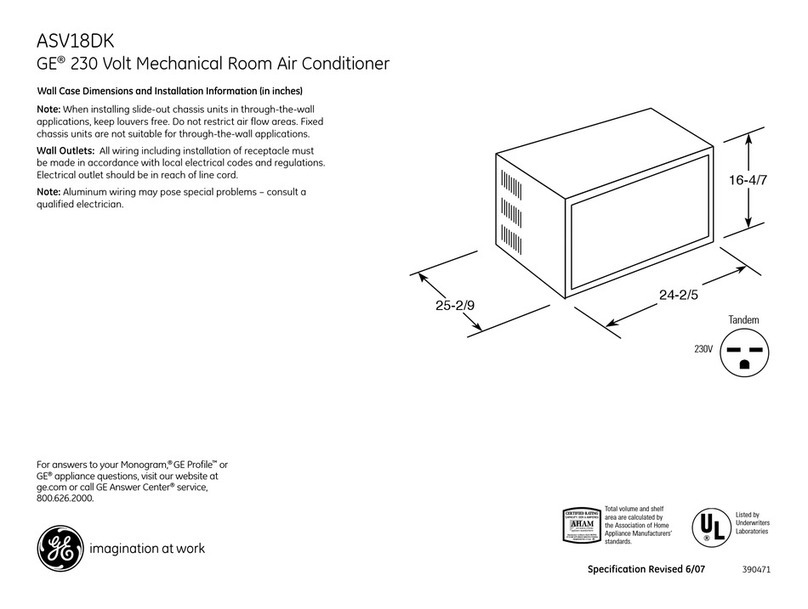
GE
GE ASV18DK Manual
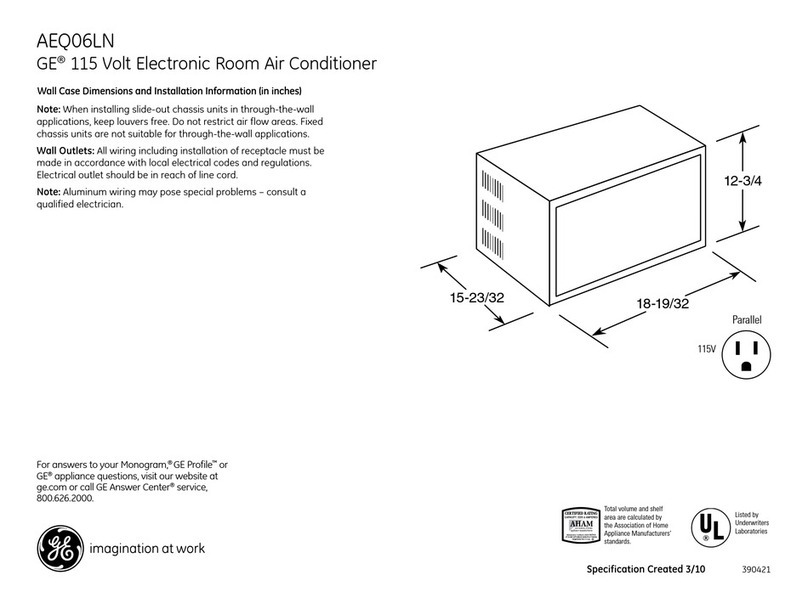
GE
GE AEQ06LN Manual
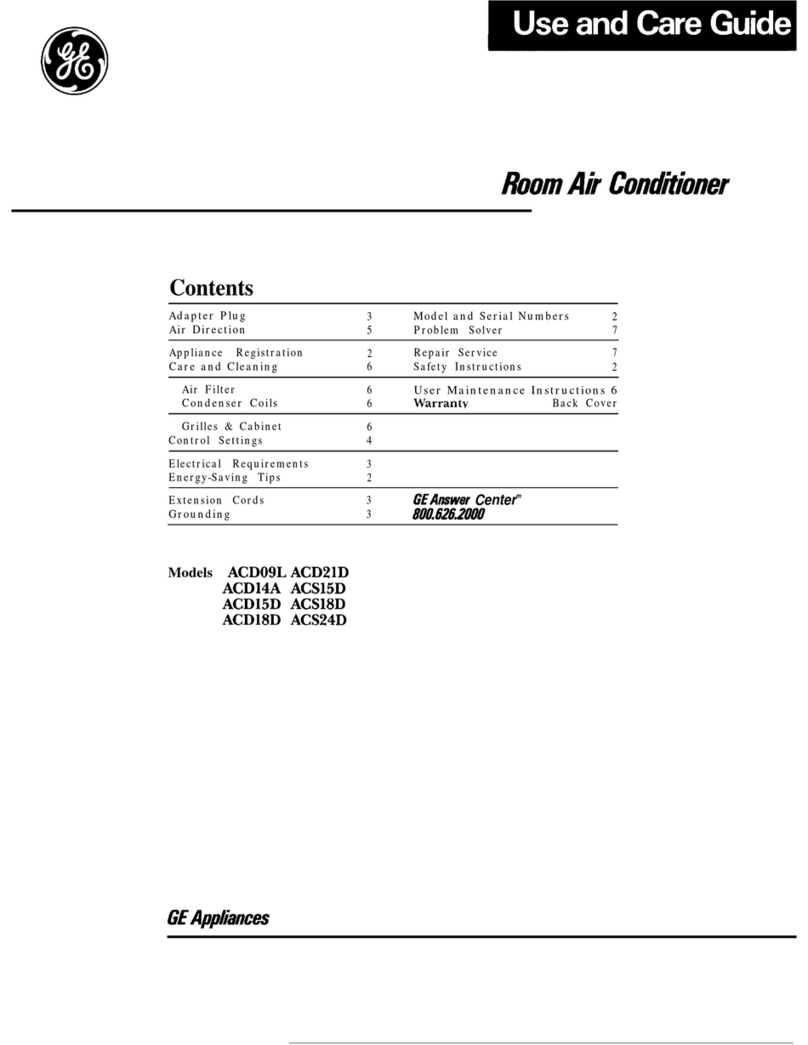
GE
GE ACD09L User manual
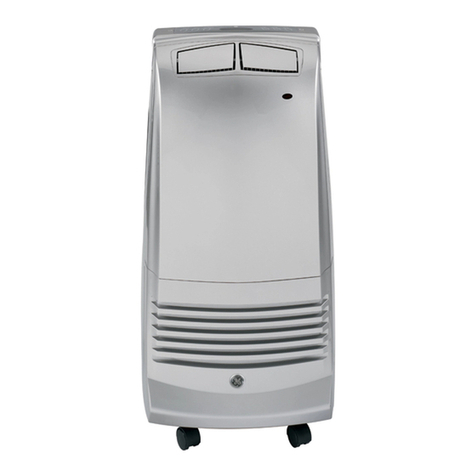
GE
GE APE08 Operating instructions
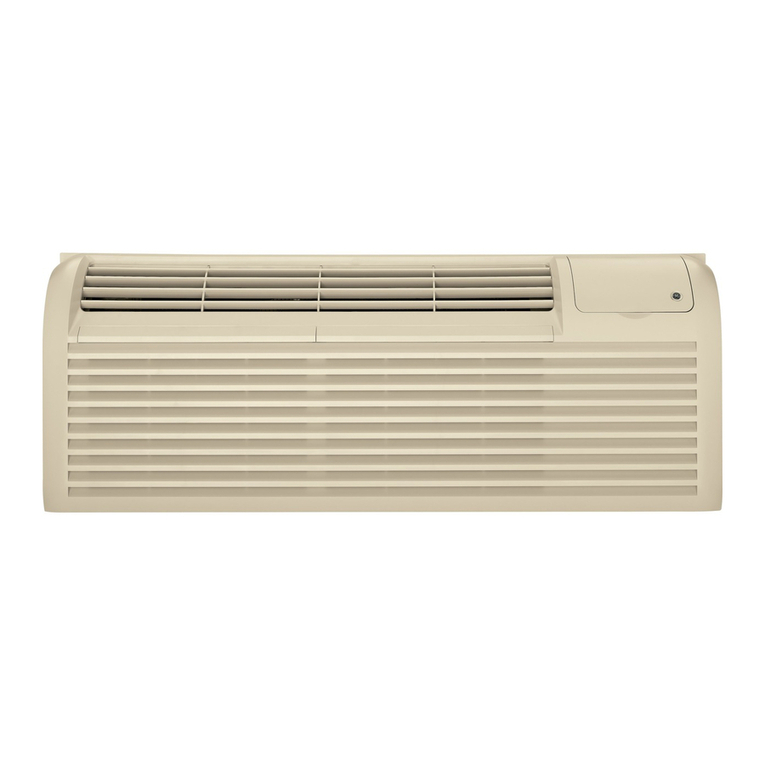
GE
GE Zoneline AZ28E09DAB Operating instructions
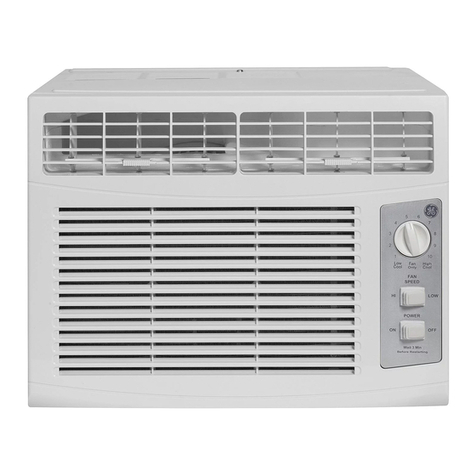
GE
GE AER05LX Operating instructions
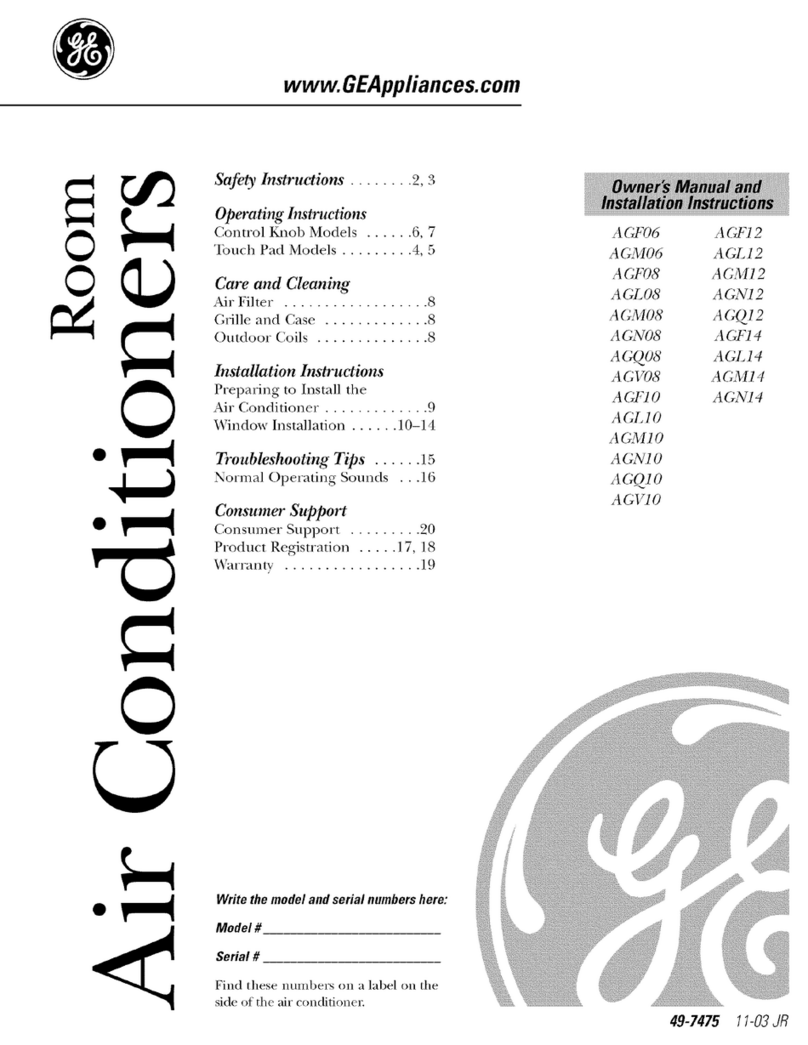
GE
GE AGM10 Operating instructions
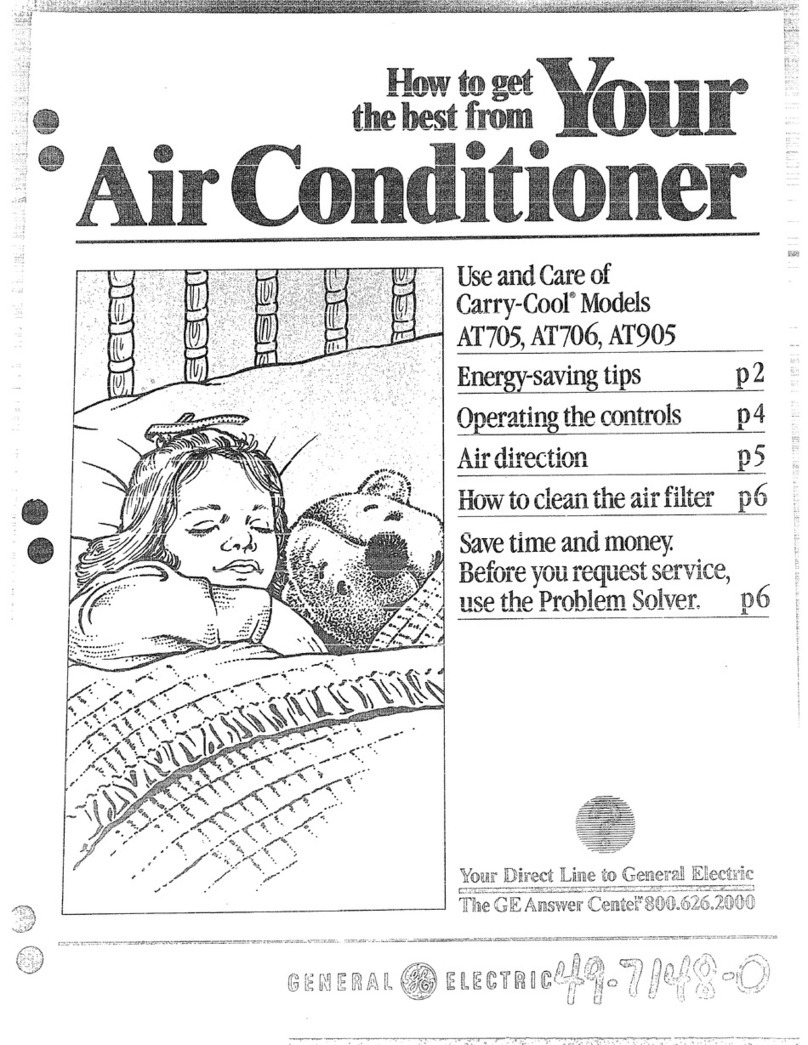
GE
GE Carry-Cool AT705 User manual
Popular Air Conditioner manuals by other brands

Fujitsu
Fujitsu ASYG 09 LLCA installation manual

York
York HVHC 07-12DS Installation & owner's manual

Carrier
Carrier Fan Coil 42B Installation, operation and maintenance manual

intensity
intensity IDUFCI60KC-3 installation manual

Frigidaire
Frigidaire FAC064K7A2 Factory parts catalog

Sanyo
Sanyo KS2432 instruction manual

Mitsubishi Electric
Mitsubishi Electric PUHZ-RP50VHA4 Service manual

Panasonic
Panasonic CS-S18HKQ Service manual

Panasonic
Panasonic CS-E15NKE3 operating instructions

Gree
Gree GWH18TC-K3DNA1B/I Service manual

Friedrich
Friedrich ZoneAire Compact P08SA owner's manual

Daikin
Daikin R32 Split Series installation manual
